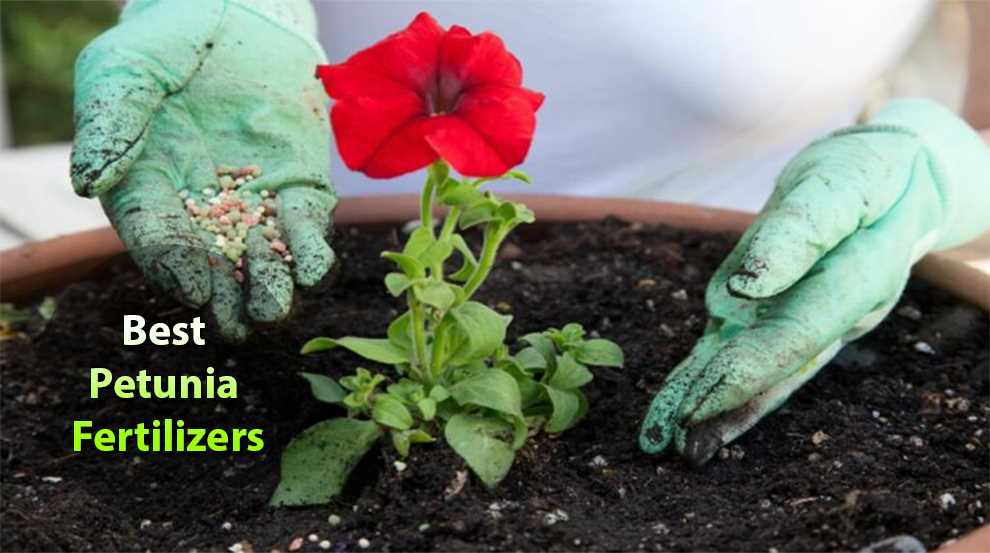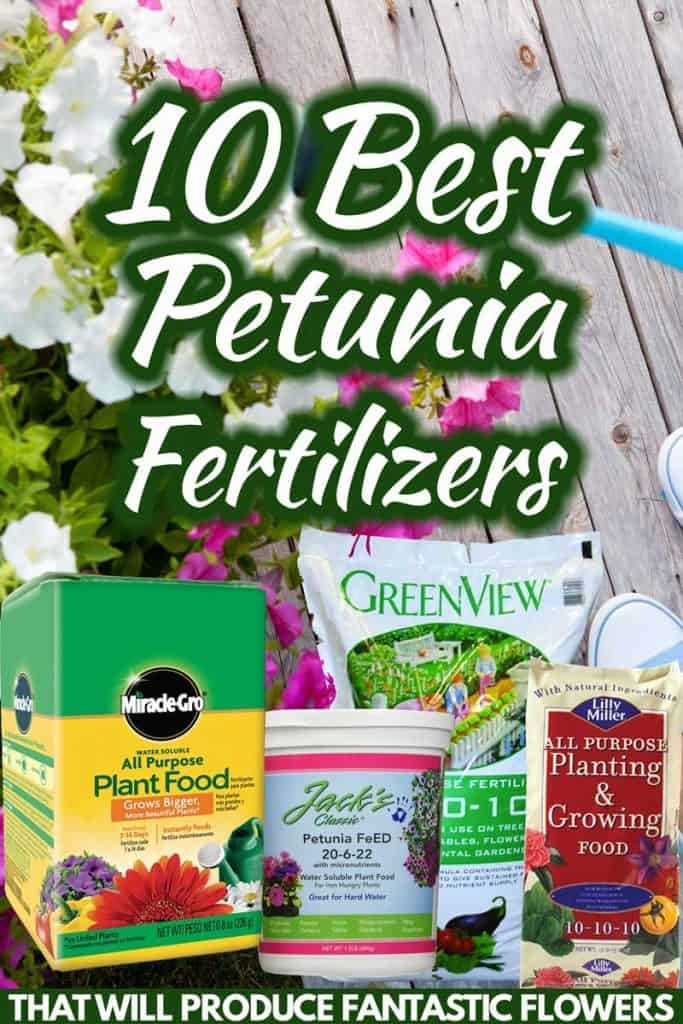- Understanding the Importance of Fertilising Petunias
- Benefits of Fertilising Petunias
- When to Fertilise Petunias
- Choosing the Right Fertiliser
- Evaluating the Health of Your Petunias
- Appearance
- Root Health
- Flower Production
- Pest and Disease
- Watering
- Fertilizer Usage
- Determining the Right Timing for Fertilising
- Planting Stage
- Weather Conditions
- Plant Appearance
- Soil Test
- Checking for Soil Nutrient Deficiencies
- Signs of Nutrient Deficiencies
- Nutrient Testing
- Addressing Nutrient Deficiencies
- Choosing the Right Fertilizer
- Applying Fertilizer
- Maintaining Nutrient Levels
- Assessing the Growth Stage of Your Petunias
- 1. Seedling Stage
- 2. Vegetative Stage
- 3. Flowering Stage
- 4. Fading Stage
- 5. Dormant Stage
- Considering Environmental Factors
- Selecting the Right Fertiliser for Your Petunias
- Consider your petunias’ needs
- Understanding NPK ratios
- Consider slow-release fertilisers
- Consult a gardening expert
- Applying the Fertiliser: Dos and Don’ts
- Do:
- Don’t:
- Questions and Answers:
- How often should I fertilize my petunias?
- What type of fertilizer should I use for my petunias?
- Are there any signs that indicate my petunias need fertilizer?
- Can I fertilize my petunias too much?
- What should I do if I accidentally over-fertilize my petunias?
- Can I use organic fertilizers on my petunias?
- Should I fertilize my petunias when they are in bloom?
- Videos: When & How to Trim Your Petunia Hanging Baskets – Two Reasons to Trim Back Petunias

If you’re a gardener who loves petunias, you know that these vibrant, colorful flowers require special care to thrive. One important aspect of caring for your petunias is knowing when and how to fertilize them. Fertilizing at the right time can ensure healthy, vigorous growth and abundant blooms. However, applying fertilizer too early or too late can have detrimental effects on your plants.
Before you rush to feed your petunias, take a moment to consider a few essential checks. First, assess the overall health of your plants. Are they growing vigorously, with lush green foliage and abundant blooms? If so, they may not need fertilization just yet. Petunias are known for their ability to thrive in poor soil conditions, so if your plants are already flourishing, adding fertilizer may do more harm than good.
Another crucial factor to consider is the stage of growth your petunias are in. Young plants that have recently been transplanted or started from seed require time to establish their roots before they can effectively absorb nutrients from fertilizers. Therefore, it’s generally best to hold off on fertilizing until your petunias have been in their new home for a few weeks. This will give them time to settle in and build a strong root system.
Lastly, it’s important to pay attention to the weather conditions before fertilizing your petunias. Extreme heat or drought can stress plants, making them more susceptible to fertilizer burn. Similarly, heavy rainfall can wash away the nutrients in the fertilizer before your petunias have a chance to absorb them. It’s best to choose a day when the weather is mild and the soil is moist but not waterlogged to apply fertilizer.
By considering these essential checks before feeding your petunias, you can ensure that you’re fertilizing at the right time and under the ideal conditions. This will help your plants thrive and produce stunning blooms that will be the envy of all who see them.
Understanding the Importance of Fertilising Petunias
Petunias are beautiful flowering plants that enhance the aesthetic appeal of any garden or landscape. To keep them healthy and vibrant, it is essential to understand the importance of fertilising these plants. Fertilising petunias can greatly contribute to their growth, overall health, and the production of abundant blooms.
Benefits of Fertilising Petunias
Fertilising petunias provides several key benefits, including:
- Promotes Growth: A well-balanced fertiliser helps in promoting healthy growth of petunias by providing essential nutrients that the plants need.
- Enhances Flowering: Fertilisers rich in phosphorus can stimulate the production of vibrant, abundant blooms, making your petunias a visual delight.
- Improves overall health: Regular fertilising ensures that petunias receive a consistent supply of nutrients, which boosts their immune system and helps them resist diseases and pests.
- Increases resistance to environmental stress: Properly fertilised petunias are better equipped to handle adverse weather conditions, such as drought or extreme temperatures.
When to Fertilise Petunias
It is important to fertilise petunias at the right time for optimal results. Here are some tips on when to fertilise:
- At planting: Incorporate a slow-release fertiliser into the soil before planting your petunias. This provides a steady supply of nutrients as the plants grow.
- After blooming: Fertilise petunias after the first wave of blooms has faded. This will help promote the development of new buds and encourage continuous flowering.
- Throughout the growing season: Regularly feed petunias with a balanced, water-soluble fertiliser every two to three weeks during the growing season to ensure they receive an adequate supply of nutrients.
Choosing the Right Fertiliser
When selecting a fertiliser for your petunias, it is important to choose one that is specifically formulated for flowering plants. Look for a balanced fertiliser with a ratio of nitrogen (N), phosphorus (P), and potassium (K) such as 10-10-10 or 14-14-14. Additionally, consider using organic fertilisers, which are gentler on the environment and provide long-lasting benefits.
Remember, over-fertilising can be harmful to petunias. Always follow the instructions on the fertiliser packaging and be sure not to exceed the recommended application rates. With adequate fertilisation, your petunias will thrive and reward you with abundant, beautiful blooms for months to come.
Evaluating the Health of Your Petunias
Before fertilizing your petunias, it’s important to evaluate their health to ensure they will benefit from the additional nutrients. Here are some key factors to consider:
Appearance
Observe the overall appearance of your petunias. Healthy plants should have vibrant, green foliage and strong stems. Look for any signs of discoloration, wilting, or leaf drop, as these may indicate underlying issues with your plants.
Root Health


Check the root health of your petunias by gently digging around the base of the plants. Healthy roots should be firm, white, and well-established. If you notice any mushy or discolored roots, it may be a sign of root rot or other problems.
Flower Production
Consider the flower production of your petunias. Healthy plants should have a steady supply of blooms. If your petunias are not producing many flowers or the blooms appear stunted or discolored, it may indicate a nutritional deficiency or other issues.
Pest and Disease
Inspect your petunias for any signs of pests or diseases. Common pests that affect petunias include aphids, snails, and slugs. Look for any visible damage to the leaves or flowers. Additionally, keep an eye out for any signs of diseases such as powdery mildew or fungal infections.
Watering
Assess your watering practices. Over or under-watering can have detrimental effects on your petunias’ health. Make sure to water your plants consistently and avoid waterlogged or dry soil conditions.
Fertilizer Usage
Consider the frequency and type of fertilizer you have used on your petunias. Over-fertilizing can lead to nutrient burn and other complications. Evaluate whether your plants have been adequately fertilized and if they are ready for another round of nutrients.
By evaluating these factors, you can determine the overall health of your petunias and make an informed decision regarding fertilization. If you notice any issues, address them before proceeding with feeding your plants.
Determining the Right Timing for Fertilising
When it comes to fertilising your petunias, timing is key. Fertilising at the right time will ensure that your plants receive the necessary nutrients to thrive and produce beautiful flowers. Here are a few factors to consider when determining the right timing for fertilising your petunias:
Planting Stage
The stage at which your petunias are in their growth cycle can affect the timing of fertilising. If you are fertilising newly planted petunias, it is important to wait until they have established a strong root system. This typically takes about 3-4 weeks after planting.
On the other hand, if you are fertilising established petunias, you can follow a regular schedule to keep them healthy and promote continuous blooming.
Weather Conditions
The weather conditions, such as temperature and rainfall, can also play a role in determining when to fertilise your petunias. In general, it is best to fertilise when the soil is moist but not waterlogged. If the soil is too wet, the fertilizer may not be able to effectively penetrate the soil and reach the plant roots.
Additionally, extreme temperatures can impact nutrient absorption. It is recommended to avoid fertilising during heatwaves or extreme cold spells, as the plants may have difficulty taking up the nutrients.
Plant Appearance
The appearance of your petunias can provide valuable clues about their nutrient needs. If the plants are growing vigorously, have lush green leaves, and are producing plenty of flowers, it is a sign that they are well-fed and may not require immediate fertilisation.
However, if the plants appear stunted, have yellowing leaves, or are not blooming as profusely as expected, it may indicate a nutrient deficiency. In this case, fertilising can help replenish the nutrients and improve the overall health of the plants.
Soil Test
Performing a soil test is another effective way to determine the right timing for fertilising your petunias. A soil test will provide valuable information about the nutrient levels in the soil, allowing you to tailor your fertilising schedule accordingly.
You can either purchase a soil test kit or send a soil sample to a local agricultural extension office for analysis. Based on the test results, you can determine which nutrients your petunias need and when to apply fertiliser to achieve optimal growth.
By considering these factors – the planting stage, weather conditions, plant appearance, and soil test results – you can determine the right timing for fertilising your petunias. This will help ensure that your plants receive the nutrients they need to thrive and produce abundant, vibrant blooms.
Checking for Soil Nutrient Deficiencies
Before fertilizing your petunias, it is important to check for soil nutrient deficiencies. This will help ensure that your plants receive the necessary nutrients for healthy growth and vibrant blooms.
Signs of Nutrient Deficiencies
There are several signs that can indicate nutrient deficiencies in petunias. These include:
- Yellowing or discoloration of leaves
- Poor growth and stunted plants
- Delayed or reduced flowering
- Leaf curling or distortion
- Fading or blotchy colored flowers
Nutrient Testing
To determine the specific nutrient deficiencies in your soil, you can conduct a soil test. Soil testing kits are readily available and can provide accurate results. These tests measure the levels of essential nutrients such as nitrogen, phosphorus, potassium, calcium, magnesium, and others.
Addressing Nutrient Deficiencies


Once you have identified the nutrient deficiencies in your soil, you can take appropriate measures to address them. This may include adding specific fertilizers or soil amendments that are rich in the deficient nutrients.
Choosing the Right Fertilizer
When selecting a fertilizer for your petunias, it is important to choose one that is specifically formulated for flowering plants. Look for a balanced fertilizer with a ratio of nitrogen (N), phosphorus (P), and potassium (K) such as 10-10-10 or 20-20-20. This will provide a well-rounded mix of nutrients to support healthy growth and blooming.
Applying Fertilizer
When applying fertilizer, follow the instructions on the packaging carefully. It is important not to over-fertilize, as this can damage plants. Apply the fertilizer evenly around the base of the plants and water thoroughly afterwards to help the nutrients reach the roots.
Maintaining Nutrient Levels


Regularly monitoring the nutrient levels in your soil is essential for maintaining the health of your petunias. Conduct soil tests annually or as needed to ensure that the nutrient levels are balanced and meet the requirements of your plants.
| Nutrient | Deficiency Signs | Solution |
|---|---|---|
| Nitrogen (N) | Yellowing leaves, stunted growth | Apply a nitrogen-rich fertilizer |
| Phosphorus (P) | Poor flowering, delayed growth | Use a phosphorus-rich fertilizer or bone meal |
| Potassium (K) | Weak stems, decreased flowering | Apply a potassium-rich fertilizer or wood ashes |
| Calcium (Ca) | Leaf curling, blossom end rot | Use calcium-rich fertilizers or gypsum |
| Magnesium (Mg) | Yellowing between leaf veins | Apply magnesium-rich fertilizers or Epsom salt |
By checking for soil nutrient deficiencies and addressing them appropriately, you can ensure that your petunias receive the necessary nutrients for healthy growth and beautiful blooms.
Assessing the Growth Stage of Your Petunias


Before fertilizing your petunias, it’s important to assess the growth stage of the plants. This will help you determine their nutritional needs and determine the right time to fertilize. Here are some key signs to look out for:
1. Seedling Stage
The seedling stage is the initial stage of seed growth where the petunias have just sprouted. At this stage, the plants are very delicate and require careful attention. It is not recommended to fertilize them during this stage, as the roots are not fully established. Focus on providing them with adequate water and light to ensure healthy growth.
2. Vegetative Stage
During the vegetative stage, the petunias start developing their leaves and stems. This stage is crucial for the growth of the plant. You can identify the vegetative stage when the plant has several sets of leaves and a well-developed root system. At this stage, the plants can benefit from a balanced fertilizer that provides essential nutrients for healthy foliage growth.
3. Flowering Stage
The flowering stage is when the petunias start producing their beautiful blooms. At this stage, the plant’s energy is focused on flowering rather than foliage growth. It is important to choose a fertilizer that is specifically formulated for blooming plants. Look for a fertilizer with a higher phosphorus content to promote abundant flower production.
4. Fading Stage
The fading stage is the period when the petunias are reaching the end of their flowering cycle. During this stage, the plant’s energy is declining, and the blooms start to fade. It’s important to stop fertilizing during this stage to allow the plants to rest and prepare for the next growth cycle. Instead, focus on removing any faded blooms and providing the plants with adequate water and light.
5. Dormant Stage
The dormant stage occurs during the winter months or when the petunias enter a period of inactivity. During this stage, the plants require minimal care, and fertilizing is not necessary. It’s important to protect them from frost and cold temperatures during this time to ensure their survival.
By assessing the growth stage of your petunias, you can provide them with the right nutrients at the right time, ensuring their optimal health and vibrant blooms.
Considering Environmental Factors
Before fertilising your petunias, it’s important to take into account the environmental factors that can affect their growth and nutrient requirements. These factors include:
- Sunlight: Petunias need a sufficient amount of sunlight to thrive. They typically require at least 6 hours of direct sunlight per day. If your petunias are not getting enough sunlight, fertilising them may not be effective as they won’t be able to absorb the nutrients properly.
- Temperature: Petunias prefer moderate temperatures between 60-70°F (15-21°C). Extreme heat or cold can stress the plants and affect their nutrient uptake. If the temperature is outside the ideal range, it’s best to wait until the weather conditions improve before fertilising your petunias.
- Watering: Proper watering is essential for petunia health and nutrient uptake. Before fertilising, check that your petunias are receiving adequate water. If the soil is dry or waterlogged, it can affect the absorption of nutrients. Adjust your watering schedule accordingly before applying fertiliser.
- Soil quality: The quality of the soil in which your petunias are planted is crucial for their nutrient requirements. Conduct a soil test to determine the pH level and nutrient content of your soil. Petunias prefer slightly acidic soil with a pH range of 5.5-6.5. If the pH level is too high or too low, it can affect nutrient availability, and you may need to adjust the soil with appropriate amendments.
- Other environmental factors: Consider other environmental factors such as wind, humidity, and pollution levels. These factors can also impact the growth and nutrient needs of your petunias. If conditions are unfavorable, it’s best to wait until the environment becomes more suitable before fertilising your petunias.
By considering these environmental factors before fertilising your petunias, you can ensure that they receive the nutrients they need for healthy growth and vibrant blooms.
Selecting the Right Fertiliser for Your Petunias
Choosing the right fertiliser is essential for the health and vitality of your petunias. Different fertilisers contain varying ratios of nutrients, so it’s important to select one that provides the right balance for your plants.
Consider your petunias’ needs
Before selecting a fertiliser, consider what your petunias require. Various factors, including the stage of growth, soil conditions, and climate, can influence their nutrient needs.
For young petunias that are still establishing roots, choose a fertiliser with a higher ratio of phosphorus, which promotes root development.
During the flowering stage, petunias benefit from a higher ratio of potassium, which supports flower production.
Understanding NPK ratios
When selecting a fertiliser, look for the NPK ratio on the packaging. NPK stands for nitrogen, phosphorus, and potassium, which are the three key nutrients petunias need.
The ratio is usually presented as three numbers, such as 10-10-10 or 20-10-10. The first number represents the percentage of nitrogen, the second represents phosphorus, and the third represents potassium.
For example, a balanced fertiliser with an NPK ratio of 10-10-10 provides equal amounts of each nutrient.
Consider slow-release fertilisers
Consider using slow-release fertilisers for your petunias. These fertilisers release nutrients gradually over an extended period, ensuring a steady supply for your plants.
Slow-release fertilisers are particularly beneficial for petunias, as they help prevent overfertilisation, which can lead to root burn or other health issues.
Consult a gardening expert
If you’re unsure about which fertiliser is best for your petunias, it’s always a good idea to seek advice from a gardening expert. They can provide specific recommendations based on your petunias’ unique needs and the conditions in your garden.
Remember to always follow the instructions on the fertiliser packaging and avoid overfertilising, as this can harm your petunias. With the right fertiliser and proper care, your petunias will grow strong and vibrant, producing a stunning display of flowers.
Applying the Fertiliser: Dos and Don’ts
Once you have checked the soil, watered the petunias, and determined that they need fertilising, it’s time to apply the fertiliser. Here are some dos and don’ts to keep in mind:
Do:
- Follow the instructions on the fertiliser packaging. Each brand and type of fertiliser may have specific instructions for application rates and timing.
- Use a balanced fertiliser with a ratio of nitrogen (N), phosphorus (P), and potassium (K) that is suitable for petunias. A ratio of 10-10-10 or 14-14-14 is commonly recommended.
- Consider using a slow-release fertiliser for petunias, especially if you don’t have the time or inclination for frequent fertiliser application.
- Apply the fertiliser evenly across the soil surface around the petunias, ensuring that the dosage is consistent across the entire planting area.
- Water the petunias after applying the fertiliser to help distribute it evenly and prevent the plants from being burned.
Don’t:


- Over-fertilise the petunias. Too much fertiliser can lead to excessive leaf growth, weak stems, and fewer blooms.
- Apply fertiliser directly to the leaves or flowers of the petunias. This can cause damage and burns.
- Use a high-nitrogen fertiliser, as this can result in excessive vegetative growth at the expense of flower production.
- Apply fertiliser when the petunias are stressed or experiencing extreme heat or drought conditions. Wait until the plants have recovered before fertilising.
By following these dos and don’ts, you can ensure that your petunias receive the right amount of fertiliser at the right time, resulting in healthy plants and beautiful blooms.
Questions and Answers:
How often should I fertilize my petunias?
It is recommended to fertilize petunias every two to three weeks during the growing season.
What type of fertilizer should I use for my petunias?
You should use a balanced, water-soluble fertilizer with an NPK ratio of 20-20-20 or similar.
Are there any signs that indicate my petunias need fertilizer?
Yes, if your petunias have weak growth, pale leaves, or lack of blooms, it may indicate a need for fertilizer.
Can I fertilize my petunias too much?
Yes, over-fertilizing can lead to excessive foliage growth, reduced blooms, and even plant burn. It’s important to follow the recommended dosage.
What should I do if I accidentally over-fertilize my petunias?
If you over-fertilize your petunias, you should leach out the excess nutrients by thoroughly watering the plants. Avoid fertilizing again until the soil dries out.
Can I use organic fertilizers on my petunias?
Yes, you can use organic fertilizers for petunias. Just make sure to choose a well-balanced organic fertilizer that provides essential nutrients.
Should I fertilize my petunias when they are in bloom?
It is generally not recommended to fertilize petunias when they are in bloom. Fertilizing beforehand helps promote healthy growth and blooming.







